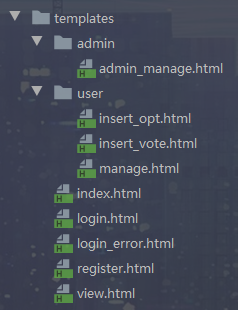- 关于依赖的导入
在同时使用Spring security 5和Thymeleaf的情况下,除了导入Spring security的基本依赖,还要额外导入整合包的依赖,否则会出现静态资源不加载、js库引入失败等问题
<dependency>
<groupId>org.springframework.boot</groupId>
<artifactId>spring-boot-starter-security</artifactId>
</dependency>
<!--与Thymeleaf整合包-->
<dependency>
<groupId>org.thymeleaf.extras</groupId>
<artifactId>thymeleaf-extras-springsecurity5</artifactId>
<version>3.0.4.RELEASE</version>
</dependency>
<dependency>
<groupId>org.aspectj</groupId>
<artifactId>aspectjweaver</artifactId>
<version>1.9.4</version>
</dependency>
- 关于自定义页面
关于自定义页面设置失败的问题,我在我的另一篇博文中进行了详细的讲解,点击跳转:
Spring security 自定义登录页面,登录后仍然跳转到登录页面 死循环的问题
另外还要说一个坑,Spring security的登录页面本质上是拦截
所以通俗的讲,应该是这样的流程
因此,自定义页面
//自定义登录页面
//loginPage代表拦截时转发到登录页面controller所接受的路径
//loginProcessingUrl代表登录表单提交的路径
//failureForwardUrl代表表单校验失败时controller转发到错误页面所接受的路径
//usernameParameter、passwordParameter指定前端传入的用户名密码所对应的参数名(默认username、password)
http.formLogin().loginPage("/toLogin").loginProcessingUrl("/login");
//自定义注销页面
//logoutUrl代表注销时controller接受的路径
//logoutSuccessUrl代表注销成功后controller转发的路径
http.logout().logoutUrl("/toLogout").logoutSuccessUrl("/");
- 关于内存读取与连接数据库两种方式
前端页面的目录结构

- 从内存中读取信息校验,只需要一个配置类
import org.springframework.beans.factory.annotation.Autowired;
import org.springframework.context.annotation.Bean;
import org.springframework.security.config.annotation.authentication.builders.AuthenticationManagerBuilder;
import org.springframework.security.config.annotation.web.builders.HttpSecurity;
import org.springframework.security.config.annotation.web.builders.WebSecurity;
import org.springframework.security.config.annotation.web.configuration.EnableWebSecurity;
import org.springframework.security.config.annotation.web.configuration.WebSecurityConfigurerAdapter;
import org.springframework.security.crypto.bcrypt.BCryptPasswordEncoder;
import org.springframework.security.web.firewall.HttpFirewall;
import org.springframework.security.web.firewall.StrictHttpFirewall;
@EnableWebSecurity
public class LoginConfig extends WebSecurityConfigurerAdapter {
//授权
@Override
protected void configure(HttpSecurity http) throws Exception {
//关闭csrf,很重要!!!不然会出现2中所述问题
http.csrf().disable();
//设置访问的规则
http.authorizeRequests().antMatchers("/").permitAll()
.antMatchers("/user/**").hasRole("user")
.antMatchers("/admin/**").hasRole("admin");
//自定义登录页面
http.formLogin().loginPage("/toLogin").failureForwardUrl("/errorLogin").loginProcessingUrl("/login");
//自定义注销页面
http.logout().logoutUrl("/toLogout").logoutSuccessUrl("/");
}
//认证
@Override
protected void configure(AuthenticationManagerBuilder auth) throws Exception {
//使用内存的方式认证admin
auth.inMemoryAuthentication().passwordEncoder(new BCryptPasswordEncoder()).
withUser("root").password(new BCryptPasswordEncoder().encode("123456")).roles("admin");
}
//一些其他的配置
@Override
public void configure(WebSecurity web) throws Exception {
super.configure(web);
web.httpFirewall(allowUrlEncodedSlashHttpFirewall());
}
@Bean
public HttpFirewall allowUrlEncodedSlashHttpFirewall() {
StrictHttpFirewall firewall = new StrictHttpFirewall();
firewall.setAllowUrlEncodedDoubleSlash(true);
return firewall;
}
}
- 从数据库中读取信息校验,需要另外自定义CustomUserDetailsService
import com.demo.entity.User;
import com.demo.service.UserService;
import org.springframework.security.core.userdetails.UserDetails;
import org.springframework.security.core.userdetails.UserDetailsService;
import org.springframework.security.core.userdetails.UsernameNotFoundException;
import org.springframework.security.crypto.bcrypt.BCryptPasswordEncoder;
import org.springframework.stereotype.Service;
import javax.annotation.Resource;
@Service
public class CustomUserDetailsService implements UserDetailsService {
//注入自己的service,以调用Dao
@Resource
private UserService userService;
//参数s代表校验时传入的username
@Override
public UserDetails loadUserByUsername(String s) throws UsernameNotFoundException {
//使用mybatis依据username查询出实体user
User user = userService.queryByUserName(s);
//如果没查到,报错,用户名错误
if (user == null){
throw new RuntimeException("用户名错误!");
}
//返回Spring security提供的user对象,withUsername配置用户名,password配置加密后的密码,roles配置权限,使用build构建
return org.springframework.security.core.userdetails.User.withUsername(user.UserName()).password(new BCryptPasswordEncoder().encode(user.getPassword())).roles("user").build();
}
}
注意!这里有两个大坑要说一下
1. Spring security 5 一定要对密码进行加密,不然会直接报错(可以自定义加密方式,或者使用现成的加密方式,比如上述代码)
2. 看其他博文中,返回值很多都使用的是Spring security User提供的构造方法,传入(用户名,加密的密码,权限集合),但我不知道是不是版本的原因,我使用那种方法时一直权限认证失败,访问页面报403错误,只有使用上述代码中的返回方式才得以验证成功
import org.springframework.beans.factory.annotation.Autowired;
import org.springframework.context.annotation.Bean;
import org.springframework.security.config.annotation.authentication.builders.AuthenticationManagerBuilder;
import org.springframework.security.config.annotation.web.builders.HttpSecurity;
import org.springframework.security.config.annotation.web.builders.WebSecurity;
import org.springframework.security.config.annotation.web.configuration.EnableWebSecurity;
import org.springframework.security.config.annotation.web.configuration.WebSecurityConfigurerAdapter;
import org.springframework.security.crypto.bcrypt.BCryptPasswordEncoder;
import org.springframework.security.web.firewall.HttpFirewall;
import org.springframework.security.web.firewall.StrictHttpFirewall;
@EnableWebSecurity
public class LoginConfig extends WebSecurityConfigurerAdapter {
@Autowired
private CustomUserDetailsService customUserDetailsService;
@Override
protected void configure(HttpSecurity http) throws Exception {
http.csrf().disable();
//首页所有人都可以访问
http.authorizeRequests().antMatchers("/").permitAll()
.antMatchers("/user/**").hasRole("user")
.antMatchers("/admin/**").hasRole("admin");
http.formLogin().loginPage("/toLogin").failureForwardUrl("/errorLogin").loginProcessingUrl("/login");
http.logout().logoutUrl("/toLogout").logoutSuccessUrl("/");
}
@Override
protected void configure(AuthenticationManagerBuilder auth) throws Exception {
//内存读取admin
auth.inMemoryAuthentication().passwordEncoder(new BCryptPasswordEncoder()).withUser("root").password(new BCryptPasswordEncoder().encode("123456")).roles("admin");
//数据库读取user
auth.userDetailsService(customUserDetailsService).passwordEncoder(new BCryptPasswordEncoder());
}
@Override
public void configure(WebSecurity web) throws Exception {
super.configure(web);
web.httpFirewall(allowUrlEncodedSlashHttpFirewall());
}
@Bean
public HttpFirewall allowUrlEncodedSlashHttpFirewall() {
StrictHttpFirewall firewall = new StrictHttpFirewall();
firewall.setAllowUrlEncodedDoubleSlash(true);
return firewall;
}
}
- 关于controller读取当前用户的信息
@PostMapping("/insert")
public String insert(Principal principal) {
//使用Principal在controller中获得相应的用户信息
principal.getName();
return "...";
}





















 9039
9039











 被折叠的 条评论
为什么被折叠?
被折叠的 条评论
为什么被折叠?








